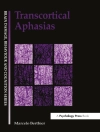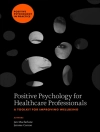This book has contributions, largely related to group analysis, from an international selection of well-known group analysts, psychologists, psychiatrists and academics. There is a very clear overview and précis of Bions’s thoughts by James Grotstein followed by ten chapters each developing an aspect of Bion’s ideas and work’.
– Journal of Analytical Psychology
‘Intended to deepen understanding of Bion’s significant contributions in addition to assisting practitioners in the field of group analysis, these volumes constitute an impressive tribute to Bion, his work, and its current and future applications.’
– Hamilton Alumni Review
The enduring influence of Bion’s work – the many rich applications of his ideas to group psychology, organizational dynamics and group therapy in the present day and looking to the future – is the central theme of this book. Chapters by distinguished international contributors from the fields of psychoanalysis, group analysis, management consultancy and social science cover work with large groups, Bion and the Tavistock conferences, and his ideas about thinking and learning, dreams and mentality. They clearly demonstrate Bion’s originality and passion as he sought the distinctive essence of psychoanalytic learning and how such a pursuit and such learning can be shared and advanced. This is a collection of original and insightful papers which, along with its companion volume Building on Bion: Roots, deepens understanding of Bion’s contributions to theory and practice, and is invaluable to those who work with groups, in both therapeutic and management contexts.
Inhoudsopgave
Preface, Malcolm Pines and Robert M. Lipgar. Introduction, James Grotstein, UCLA, USA. Part I: Working with Groups. 1. Bion’s Legacy to Median and Large Groups, Mark F. Ettin, psychotherapist, USA. 2. The Large Group and its Conductor, Gerhard Wilke, group analyst, UK. Part II: Application: Putting Bion’s Ideas to Work. 3. From Groups to Group Relations: Bion’s Contribution to the Tavistock `Leicester’ Conferences, Mannie Sher, Tavistock Institute. 4. Alcoholics Anonymous as Medical Treatment for Alcoholism: A Group-analytic Perspective on How it Works, Jeffrey D. Roth, psychiatrist, USA. 5. `Attacks on Linking’ and `Alpha Function’ as Two Opposite Elements in the Dynamics of Organizations, Hanna Biran, Tel Aviv University, Israel. 6. Learning at the Edges between Knowing and Not-knowing: `Translating’ Bion, Robert French and Peter Simpson, University of the West of England. 7. Narcissism v. Social-ism Governing Thinking in Social Systems, Gordon Lawrence. Part III: Bion as Pioneer in Thinking, Learning and Transmitting Knowledge. 8. Transcending the Caesura: The Road Towards Insight – from Experiences in Groups to A Memoir of the Future, Lia Pistiner de Cortinas, psychoanalyst, Argentina. 9. `So you want to write a fugue?’ Wilfred R. Bion with Glenn Gould, Jacqueline P. Colombier, analyst, France. 10. Preconception and Realisation: A Constant Conjunction of Theory and Measurement, Steven R. Brown, Kent State University, USA. References. Index.












